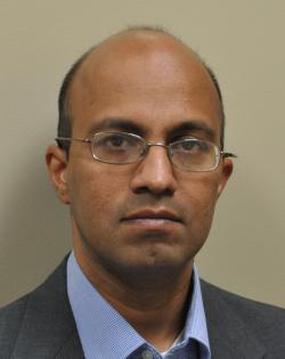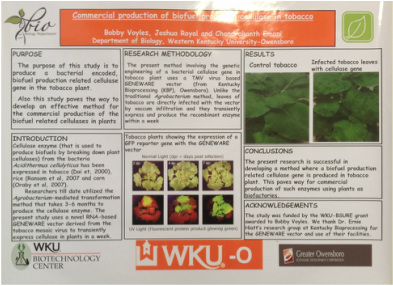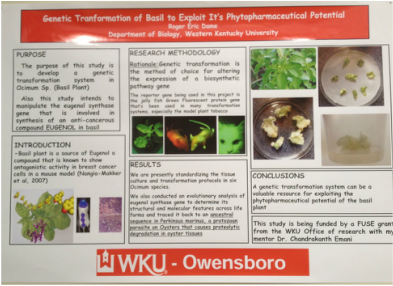Bioinformatics Research Initiative: Where'd that gene come from?
In partnership with WKU-O and Dr. Emani, LSA students will begin researching the origins of various genes via bioinformatics. Our intent is to present this research at the WKU Student Research Conference March 28, 2015 and eventually publish in a peer-reviewed journal. Once our work begins we will report on our progress and results here, so check back for updates!
WKU-O Research Faculty
Dr. Chandrakanth Emani Ph.D. Osmania University Assistant Professor of Plant Molecular Biology Office: WKU-Owensboro 109E Phone: (270) 852-6406 Email: [email protected] Curriculum Vitae Research
Plant Genetic Engineering
Using episodic history in biology to instill scientific thought process in classroom and educating the general public about scientific method and scientific thinking Articles from the Messenger Inquirer by Dr. Emani
Scientists and Soldiers A Monk in a Pea Garden Baby Corn Cobs & Nobel Prizes Father of Social Medicine Lasik Mad Dogs, Broccoli and a Little Book Petunias The Book of Life We are all Scientists |
Assignment 1: Identify your gene of interest
Thyroid- Thyroid adenoma isaform a Homo sapien
Asthma- Interleukin 13 Homo sapien Alzheimer's- Presenelin 2 (Alzheimer disease 4) Isoform CRA_a Homo sapien Cancer- p53 Homo sapien Schizophrenia- disrupted in schizophrenia 1 protein isoform L Homo sapien Narcolepsy- Orexin precursor Homo sapien Tay Sachs- Chain A Native human Lysosomal B- Hex Isoform B Homo sapien HIV- CCR5 Homo sapien Breast Cancer- BRCA1 Homo sapien Leukemia- chronic lymphocytic leukemia up-regulated protein 1 Homo sapien Infertility- ubiquitin carboxyl-terminal hydrolase 26 Homo sapien Assignment 2:
1) Copy/Paste the FASTA sequence for your gene. 2) Run a blast and distance tree of results. Record the scientific and common name of of the most ancestral species discovered on the tree. 3) Click the domain name and copy/paste the information pictured at the top of the page. Assignment 3:
|




